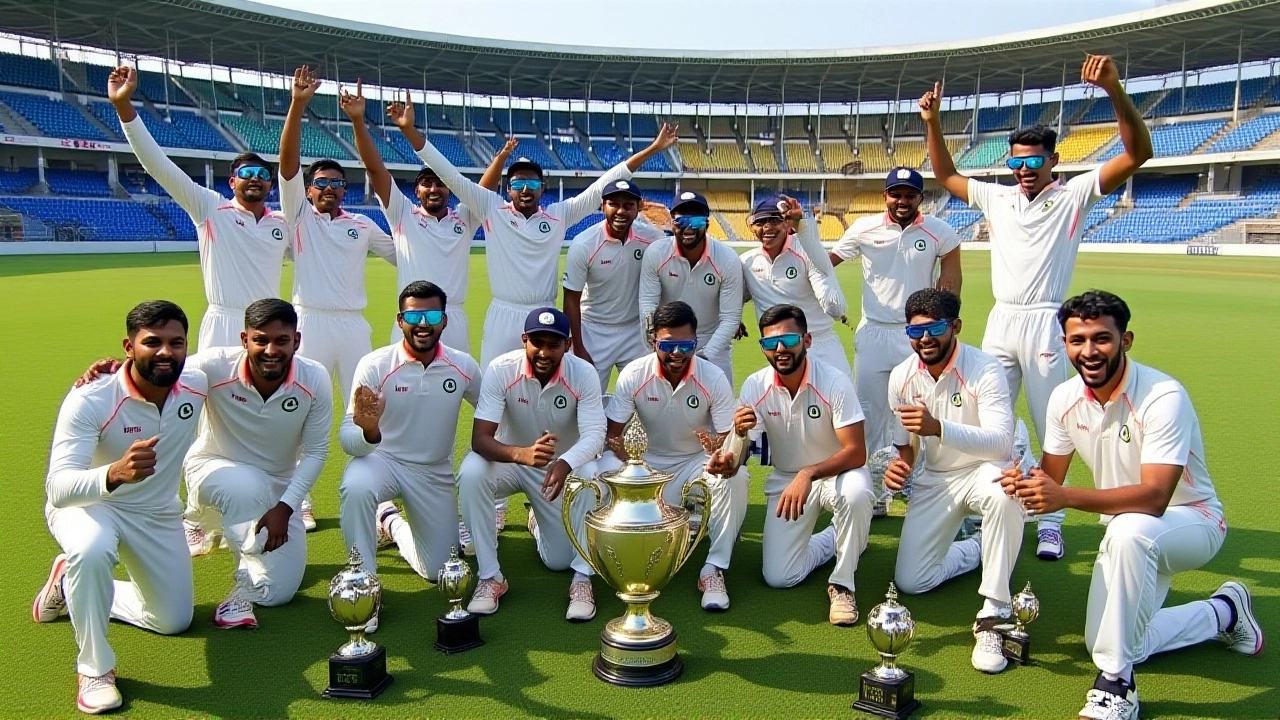Ranji Trophy: India’s Premier First‑Class Cricket Competition
When talking about Ranji Trophy, the top‑tier first‑class cricket tournament organized by the Board of Control for Cricket in India (BCCI). Also known as Ranji, it pits state and regional squads against each other across a multi‑week season, serving as the main pathway for players to reach the national side.
The event is overseen by BCCI, India’s governing body for cricket, which sets the calendar, allocates venues and enforces the rules that keep the competition fair. First‑class cricket, a format that lasts four days and follows the traditional two‑innings structure is the backbone of the tournament, ensuring players develop the stamina and technique required for Test cricket. The Ranji Trophy season typically kicks off in September and runs until March, giving each team a balanced mix of home and away matches.
What makes the Ranji Trophy unique?
Every participating side represents an Indian domestic team, such as Mumbai, Karnataka, Tamil Nadu, or Railways. These squads are a blend of seasoned veterans and promising youngsters, creating a competitive environment where performance directly influences selection for the national squad. Points are awarded for outright wins, first‑innings leads, and draws, forming a transparent league table that determines who reaches the knockout stage. This points system encourages aggressive play while rewarding consistency.
Match venues range from bustling stadiums in major metros to historic grounds in smaller towns. Playing in diverse conditions—spin‑friendly pitches in Chennai, seamer‑friendly tracks in Delhi, or high‑altitude fields in Jammu—forces teams to adapt quickly. This geographic variety mirrors the challenges of international cricket, giving selectors a realistic gauge of a player’s versatility.
Beyond the on‑field action, the Ranji Trophy fuels local fan bases. State associations promote matches through community events, school outreach programs and live streaming on regional platforms. The tournament’s media coverage has grown with digital platforms, allowing cricket enthusiasts across the country to follow scores, player statistics and emerging talents in real time.
Statistically, the competition produces a steady stream of record‑breaking performances. Batters regularly notch double centuries, bowlers achieve ten‑wicket hauls, and all‑rounders make decisive contributions. These milestones are tracked on official BCCI dashboards, and standout figures often earn “Player of the Season” honors, which boost contract negotiations in the Indian Premier League and other franchise leagues.
Coaching staff play a pivotal role as well. Each team employs specialist coaches—batting, bowling, fielding—and a support crew that includes physiotherapists and analysts. The integration of video analysis tools and fitness monitoring technologies has modernized preparation, aligning domestic standards with those of the national team.
Looking ahead, the BCCI continues to tweak the format to keep the tournament fresh. Recent experiments include merging groups to reduce travel, introducing night matches under lights, and offering cash incentives for the highest run‑scorer and wicket‑taker. These tweaks reflect a broader strategy to maintain the Ranji Trophy’s relevance in a cricket‑centric nation.
Below, you’ll find a curated collection of articles that dig deeper into the tournament’s history, standout seasons, player breakthroughs, and the impact of recent format changes. Use them to sharpen your understanding of why the Ranji Trophy remains the heartbeat of Indian cricket.
The 2025‑26 IDFC First Bank Ranji Trophy starts Oct 15, with Vidarbha defending their title. Elite and Plate formats, prize money, and promotion‑relegation details outlined.
Oct, 16 2025
